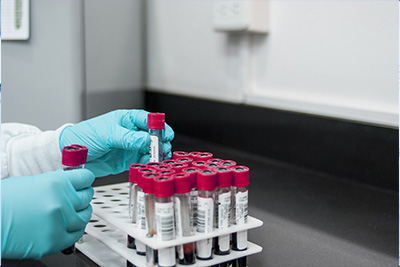-
![Tri-n-butyltin Hyd···]() 2025-01-08 Tri-n-butyltin Hydride: Impact and U···
2025-01-08 Tri-n-butyltin Hydride: Impact and U···Tri-n-butyltin hydride (Bu3SnH) is an essential organometallic reagent known for its ability to transfer hydride ions in radical reactions. Commonly used in organic synthesis, it plays a crucial role in the reduction of various functional groups, such as carbonyls and double bonds. Its unique reactivity makes it valuable in polymer chemistry, where it facilitates controlled radical polymerization. Safety considerations are paramount due to its toxicity and potential health hazards. Understanding its impact and applications is vital for chemists involved in advanced synthetic procedures and materials development.
read more > -
![O-Isopropyl Ethylt···]() 2025-01-08 O-Isopropyl Ethylthiocarbamate in th···
2025-01-08 O-Isopropyl Ethylthiocarbamate in th···The article discusses the utilization of O-Isopropyl Ethylthiocarbamate in the synthesis of organotin compounds, highlighting its significant applications in the field of organic chemistry. This compound serves as an important intermediate in the preparation of various organotin derivatives, which are widely used in areas such as materials science, pharmaceuticals, and agrochemicals. The synthesis process and its potential impacts on advancing organic chemistry research are explored, emphasizing the versatility and importance of O-Isopropyl Ethylthiocarbamate in creating novel organotin compounds.
read more > -
![Dimethyltin Dichlo···]() 2025-01-08 Dimethyltin Dichloride and Its Indus···
2025-01-08 Dimethyltin Dichloride and Its Indus···Dimethyltin dichloride (DMTC) plays a crucial role in chemical synthesis due to its reactivity and versatility. It is commonly used in industrial processes, particularly in the production of agrochemicals, polymers, and pharmaceuticals. DMTC reacts efficiently with alcohols, amines, and thiols to form various tin organic compounds. These reactions are pivotal for synthesizing complex molecules with precise control over their structure and functionality. Additionally, DMTC's ability to form coordination complexes enhances its utility in catalytic applications. Despite its toxicity, proper handling and containment ensure safe usage in controlled environments, underscoring its significance in modern chemical manufacturing.
read more > -
![2-Ethylhexyl Thiog···]() 2025-01-08 2-Ethylhexyl Thioglycolate in Polyme···
2025-01-08 2-Ethylhexyl Thioglycolate in Polyme···2-Ethylhexyl thioglycolate (EHT) is a key reagent in polymerization reactions, playing a crucial role in the production of various polymers. Its unique properties make it indispensable for enhancing the efficiency and quality of polymerization processes. EHT acts as an effective chain transfer agent, regulating molecular weight and improving the control over polymer architecture. This compound is widely used in industries such as plastics and coatings, contributing significantly to the development of advanced materials with superior performance characteristics.
read more > -
![Di-n-butyltin Oxid···]() 2025-01-08 Di-n-butyltin Oxide (DBTO) in Polyme···
2025-01-08 Di-n-butyltin Oxide (DBTO) in Polyme···Di-n-butyltin oxide (DBTO) is a tin-based compound that significantly enhances the durability of polymeric materials, particularly plastics. By incorporating DBTO into plastic formulations, manufacturers can improve the resistance of these materials to environmental factors such as heat, UV radiation, and mechanical stress. This results in extended service life and reduced maintenance costs. DBTO acts through various mechanisms including cross-linking and catalytic reactions, which strengthen the polymer matrix and prevent degradation. Consequently, the use of DBTO in polymeric materials represents a valuable approach for developing more resilient and long-lasting plastic products.
read more > -
![Dibutyl Tin Dilaur···]() 2025-01-08 Dibutyl Tin Dilaurate: A Critical Co···
2025-01-08 Dibutyl Tin Dilaurate: A Critical Co···Dibutyl tin dilaurate (DBTDL) is an essential component in polyvinyl chloride (PVC) additives, offering significant advantages to manufacturers. This organotin compound acts as an efficient catalyst and heat stabilizer, enhancing the production process and final product quality. DBTDL improves the thermal stability of PVC, prolonging the material's lifespan and ensuring durability. Its use also results in reduced energy consumption during manufacturing, leading to cost savings. Additionally, DBTDL facilitates better processing properties, making it easier to mold and shape PVC products. These benefits collectively make DBTDL a crucial ingredient in the manufacturing of high-quality PVC materials.
read more > -
![n-Butyltris(2-ethy···]() 2025-01-08 n-Butyltris(2-ethylhexanoate) in Che···
2025-01-08 n-Butyltris(2-ethylhexanoate) in Che···The use of n-Butyltris(2-ethylhexanoate) in the chemical stabilization of plastics offers significant advantages to the industry. This stabilizer effectively prevents degradation caused by heat and light, thereby extending the lifespan of plastic products. Its application enhances processing stability and reduces production waste, leading to cost savings and environmental benefits. The compatibility of this stabilizer with various plastic types makes it a versatile choice for manufacturers aiming to improve product quality and sustainability.
read more > -
![Tetra Butyltin in ···]() 2025-01-08 Tetra Butyltin in Industrial Synthes···
2025-01-08 Tetra Butyltin in Industrial Synthes···Tributyltin (TBT) is widely used in industrial synthesis and catalysis due to its unique chemical properties. This paper explores the role of TBT in various chemical reactions, focusing on its applications in organic synthesis, polymerization processes, and catalytic transformations. The study highlights TBT's efficiency as a catalyst in esterifications, transesterifications, and condensation reactions, emphasizing its ability to enhance reaction rates and selectivity. Additionally, the article discusses the environmental impact of TBT and the need for safer alternatives in industrial practices. Understanding these aspects is crucial for optimizing TBT usage and developing sustainable chemical processes.
read more > -
![Tri-n-Butyltin Hyd···]() 2025-01-08 Tri-n-Butyltin Hydride: Enhancing Ch···
2025-01-08 Tri-n-Butyltin Hydride: Enhancing Ch···Tri-n-butyltin hydride (TBT-H) is a versatile reagent widely used in organic synthesis to enhance chemical reactions. Its unique properties make it particularly effective in radical substitution and addition reactions, where it can initiate and control the formation of new bonds with high precision. TBT-H is commonly employed in the synthesis of complex molecules due to its ability to add selectively across multiple reaction sites, thereby improving yield and selectivity. Additionally, its utility extends to polymerization processes and the modification of existing materials, showcasing its broad applicability in both academic research and industrial applications.
read more >









